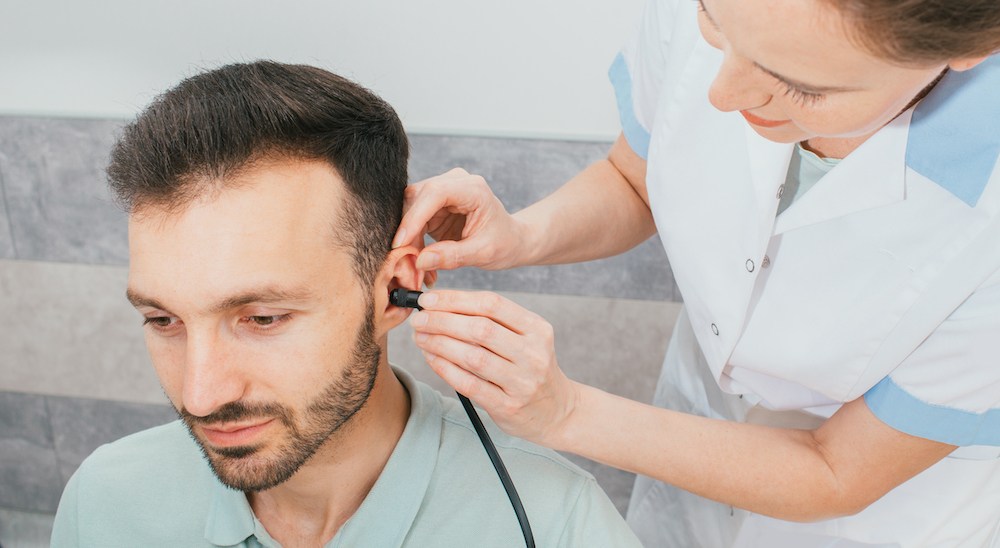The Challenges of Using Hearing Aids in Cold Weather
Winter is on its way, and with it comes a unique set of challenges for

By: admin | November 18, 2020
Difficulty in hearing or hearing loss can change your lifestyle in several ways. In children, it may stunt their development in speech and language. For adults, studies show that hearing loss can lead to other conditions like headaches, high blood pressure, depression, withdrawing from social activities, and memory loss. But despite these effects, many people still do not realize that they are having issues with hearing. A survey conducted by Consumer Reports found that out of approximately 120,000 people, 30% of them have spent nearly ten years not getting tested or have never tested their hearing before. To avoid, prevent, and better manage hearing loss issues, healthcare professionals recommend that people regularly test their hearing every three to five years. This article will give some insight concerning the background of these tests and other relevant information concerning them.
A hearing test, also known as an audiometry evaluation, is a non-invasive procedure that measures a person’s capacity to hear various sounds at different pitches and frequencies. A hearing test’s findings are usually displayed as an audiogram, which is a graph that presents the lowest or softest sounds a person can hear at different intervals. The person hearing these sounds at different wavelengths will be required to press a button when they hear something. On average, these tests take about 30 minutes to complete, but that might also depend on the number of sounds and tests conducted. Professionals can read these audiograms and identify where there is a hearing loss. If there are higher marks on the graph, it indicates moderate to normal hearing. On the other hand, lower marks may reveal signs of severe to profound hearing loss.
Hearing disorders and issues have been around for a very long time. Historians believe that Hippocrates presumably conducted the first hearing test in 60-377 BC, and found in his study that heavy winds and skull injuries caused hearing loss. In the Early and Middle Ages (about 25 BC), Aulus Cornelius Celsus, author of one of the first medical encyclopedias, was tested for hearing loss. He recommended having ulcers removed surgically as a solution to hearing disorders. From that time to the 1800s, many other discoveries and advancements took place. Nonetheless, it wasn’t until the late 1800s that hearing tests took a technological turn. Two German physicians decided to test patients with a tuning fork. This test determined if hearing damage or loss was either conductive (difficult to hear soft sounds) or sensorineural (damage to the inner ear or auditory nerve). The first electric audiometer was introduced in 1919 in Germany. The recognized pioneers in audiology, Raymond Carhart and Norton Canfield, treated many soldiers who had hearing loss. They were able to chart the results of the tests, which is today known as the audiogram. These days, hearing tests and audiograms are widespread, and even newborn babies are immediately tested for hearing impairment. There are also many other tests that audiologists perform to diagnose hearing damage, and there are even many online hearing tests available. These tests usually flag up any auditory issues you might have and refer you to an audiologist.
Audiologists are qualified to conduct hearing tests for patients with hearing problems. They are professionally trained to identify, test, and diagnose disorders that affect the auditory system. Audiologists need licenses from the state they live in to qualify them to practice. All audiologists must also have a Doctor of Audiology (AuD) degree. Many of them decide to get further certifications across different associations within the audiology field.
Audiologists recommend that everybody must have their hearing evaluated every three to five years. However, some groups might need to have more regular tests conducted. Here are some groups of people who might need more frequent audiometry evaluations:
To summarize, hearing tests have been around for hundreds of years. And today, thanks to advancements in science and technology, there are many new ways to conduct them. If you haven’t been tested over a long period, perhaps you should consider having your hearing checked, particularly if you fall within one of the at-risk groups. Find an audiologist near you and book an appointment today. To learn more about Sommerville Audiology & Hearing Aid Center, call any of the numbers below:

Winter is on its way, and with it comes a unique set of challenges for
By: admin | January 31, 2024

When it comes to hearing aids, there are plenty available on the market,
By: admin | December 28, 2023

Ensuring your overall well-being involves making regular hearing tests a
By: admin | November 25, 2023
